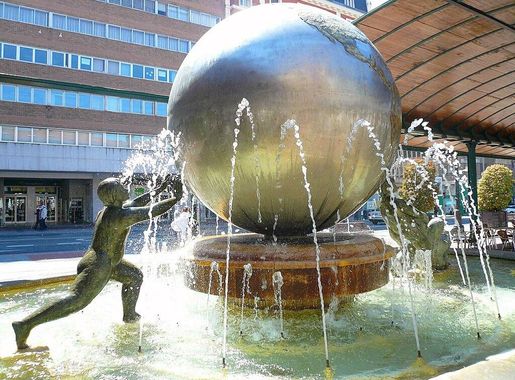
Valladolid: The Heart of Castile and León
Discover Valladolid, a city rich in history and culture, offering stunning architecture, delicious cuisine, and vibrant festivals in the heart of Castile and León.
Valladolid, a historic city in northwest Spain, is a treasure trove of architecture, culture, and culinary delights. As the former capital of Spain, Valladolid boasts a rich history that can be seen in its grand Renaissance buildings, charming plazas, and well-preserved churches. Wander through the old town and you will find a mix of medieval and modern influences that create a unique atmosphere. One of the highlights of Valladolid is the Plaza Mayor, a beautiful square surrounded by colorful buildings and lively cafes. It's the perfect spot to relax and soak in the local ambiance. Nearby, you can visit the National Sculpture Museum, which houses an impressive collection of Spanish sculptures from the Middle Ages to the 19th century. Don't miss the San Pablo Church, known for its stunning façade and intricate details. Food lovers will find Valladolid a paradise, with its numerous tapas bars and traditional Castilian cuisine. Try the local specialties like lechazo (roast lamb) and morcilla (blood sausage), paired with a glass of fine wine from the Ribera del Duero region. The city's lively nightlife, especially during the Semana Santa (Holy Week) and the International Film Festival, adds to its charm and makes it a must-visit destination for any traveler.
Local tips in Valladolid
- Visit early in the morning to avoid crowds at popular attractions like the Plaza Mayor and the National Sculpture Museum.
- Try to learn a few basic Spanish phrases as not everyone speaks English.
- Wear comfortable shoes, as Valladolid is best explored on foot.
- Check the local festival calendar; Valladolid hosts many events that offer a glimpse into its vibrant culture.
- Don't forget to sample the local wines from the nearby Ribera del Duero wine region.
Valladolid: The Heart of Castile and León
Valladolid, a historic city in northwest Spain, is a treasure trove of architecture, culture, and culinary delights. As the former capital of Spain, Valladolid boasts a rich history that can be seen in its grand Renaissance buildings, charming plazas, and well-preserved churches. Wander through the old town and you will find a mix of medieval and modern influences that create a unique atmosphere. One of the highlights of Valladolid is the Plaza Mayor, a beautiful square surrounded by colorful buildings and lively cafes. It's the perfect spot to relax and soak in the local ambiance. Nearby, you can visit the National Sculpture Museum, which houses an impressive collection of Spanish sculptures from the Middle Ages to the 19th century. Don't miss the San Pablo Church, known for its stunning façade and intricate details. Food lovers will find Valladolid a paradise, with its numerous tapas bars and traditional Castilian cuisine. Try the local specialties like lechazo (roast lamb) and morcilla (blood sausage), paired with a glass of fine wine from the Ribera del Duero region. The city's lively nightlife, especially during the Semana Santa (Holy Week) and the International Film Festival, adds to its charm and makes it a must-visit destination for any traveler.
When is the best time to go to Valladolid?
Iconic landmarks you can’t miss
Parque Campo Grande
Experience the lush landscapes and tranquil atmosphere of Parque Campo Grande, a scenic park in the heart of Valladolid, perfect for relaxation and nature walks.
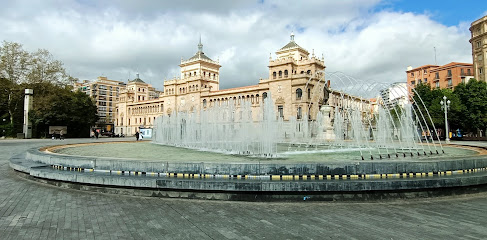
Plaza Mayor de Valladolid
Experience the vibrant life and rich history at Plaza Mayor de Valladolid, the heart of the city filled with culture, cuisine, and charm.
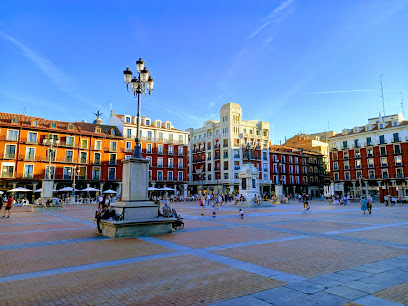
Plaza de Zorrilla
Experience the vibrant culture and rich history of Plaza de Zorrilla—a must-visit landmark in Valladolid, Spain, that captivates every traveler.
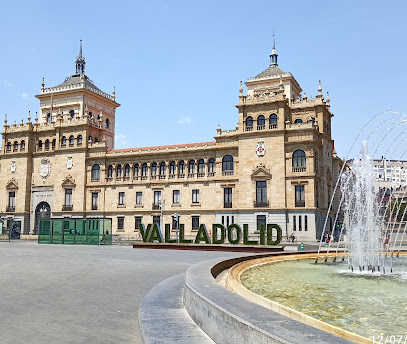
Cathedral of Valladolid
Discover the stunning beauty and historical significance of the Cathedral of Valladolid, an architectural masterpiece in the heart of Spain.
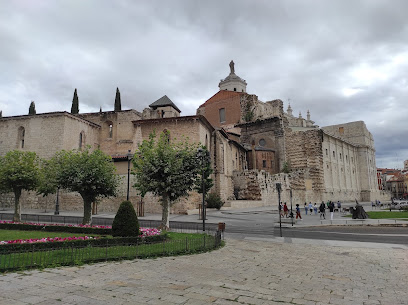
Museo Nacional de Escultura
Discover the rich heritage of Spanish sculpture at the Museo Nacional de Escultura, a must-see cultural landmark in Valladolid featuring exquisite artworks and historic architecture.
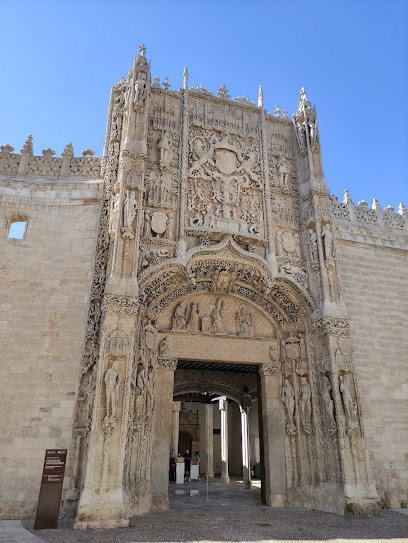
Pasaje Gutiérrez
Discover the charm of Pasaje Gutiérrez, a unique shopping mall in Valladolid blending modern retail, historic ambiance, and local culture.
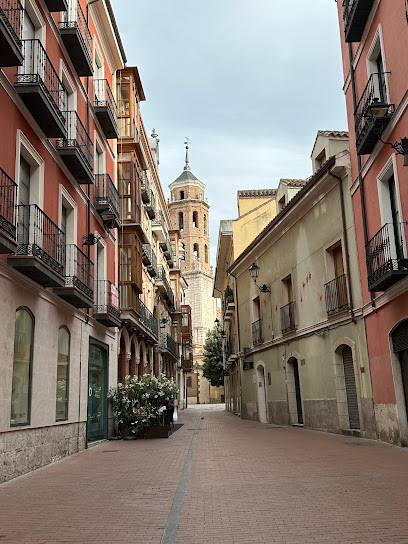
Casa de Cervantes
Explore the legacy of Miguel de Cervantes at Casa de Cervantes, a museum dedicated to the life and works of Spain's literary genius in Valladolid.
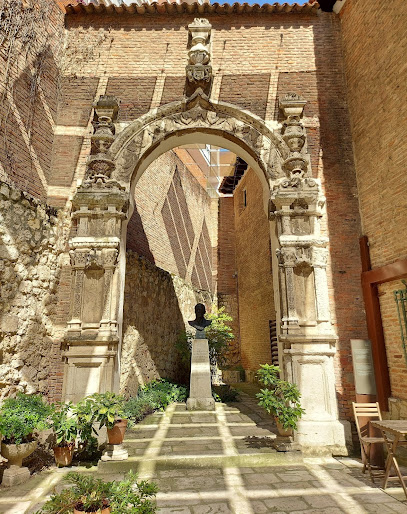
Casa Museo Colón
Discover the legacy of Christopher Columbus at Casa Museo Colón, a captivating museum in Valladolid showcasing the explorer's life and journeys.
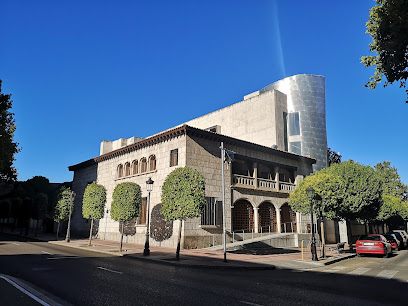
Royal Palace
Discover the Royal Palace of Valladolid, a historical landmark showcasing Spain's regal past through stunning architecture and rich cultural heritage.

Museo Oriental
Explore the captivating world of Asian art and culture at Valladolid's Museo Oriental, a treasure trove of artifacts and history.
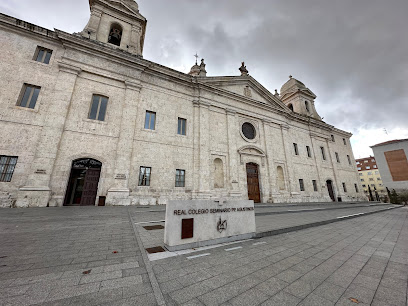
Palacio de Fabio Nelli
Explore the rich artistic heritage of Valladolid at Palacio de Fabio Nelli, where stunning architecture and exquisite art await every visitor.
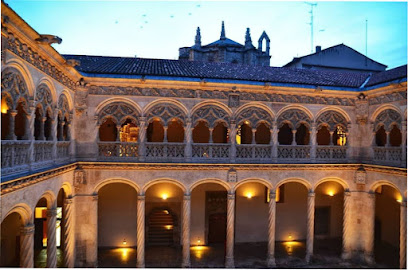
Valladolid Campo Grande
Experience the architectural beauty and cultural significance of Valladolid Campo Grande, a key Spanish transport hub for adventurous travelers.
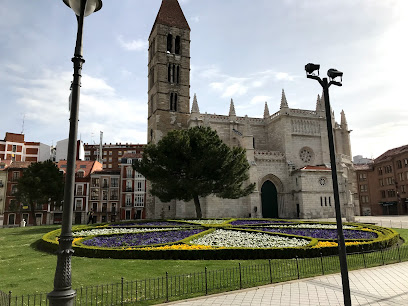
Church of San Miguel and San Julián, Valladolid
Explore the historical and architectural beauty of the Church of San Miguel and San Julián, a must-visit Catholic church in Valladolid.
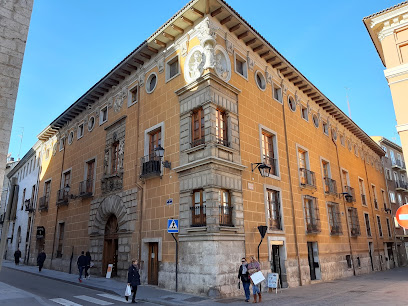
Arroyo de la Encomienda Botanical Garden
Explore the enchanting Arroyo de la Encomienda Botanical Garden, a lush oasis in Valladolid filled with diverse flora and serene pathways for all nature lovers.
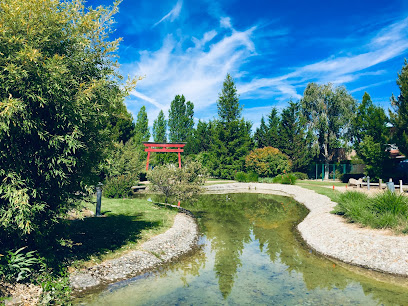
Casa Consistorial de Valladolid
Explore the Casa Consistorial de Valladolid, a historical city hall showcasing the rich cultural heritage and vibrant local governance of Valladolid.
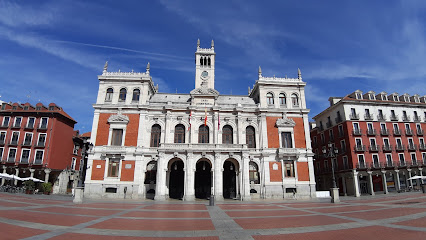
Unmissable attractions to see
Parque Campo Grande
Explore the tranquil beauty of Parque Campo Grande, a lush park in Valladolid, rich in history and perfect for relaxation and leisurely strolls.
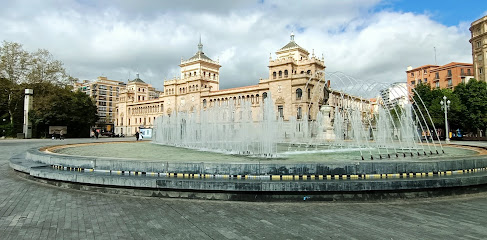
Plaza de Zorrilla
Experience the historical allure and vibrant atmosphere of Plaza de Zorrilla in Valladolid, a cultural gem in the heart of Spain.
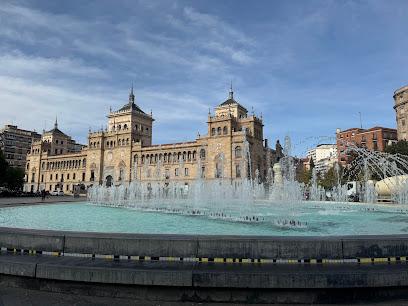
Museo Nacional de Escultura
Explore the enchanting world of Spanish sculpture at the Museo Nacional de Escultura in Valladolid, a treasure trove of artistic heritage.
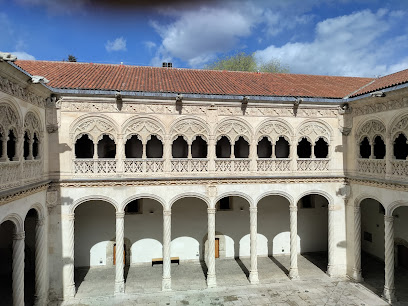
Parque de las Moreras
Experience the serene beauty of Parque de las Moreras, a lush urban park in Valladolid perfect for relaxation, family fun, and cultural exploration.
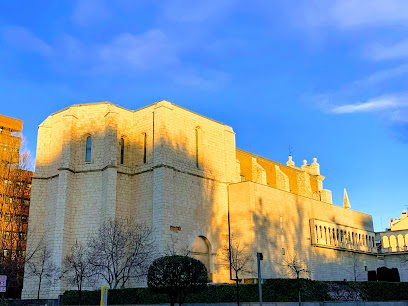
Fuente Dorada
Experience the beauty and culture of Fuente Dorada, a vibrant square in Valladolid, Spain, known for its stunning fountain and lively atmosphere.
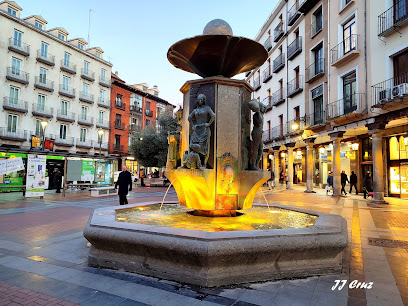
Valladolid Science Museum
Explore the fascinating world of science at Valladolid Science Museum, a dynamic destination filled with interactive exhibits and engaging planetarium shows.
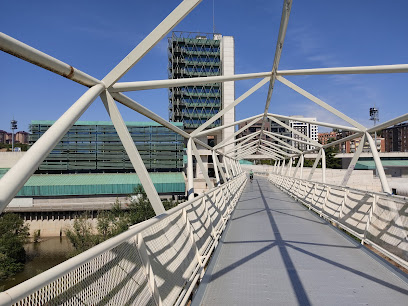
Museo Patio Herreriano
Explore contemporary art and history at Museo Patio Herreriano, a cultural gem in the heart of Valladolid, Spain.
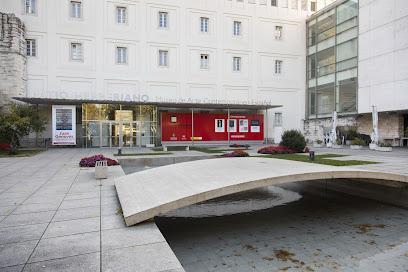
La Rosaleda
Explore La Rosaleda in Valladolid, a botanical garden oasis filled with stunning roses and vibrant flora, perfect for relaxation and leisure.
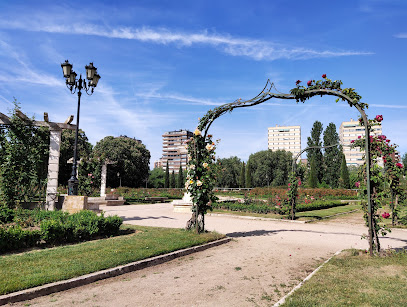
Iglesia De San Benito
Experience the elegance and serenity of Iglesia De San Benito, a captivating Catholic church and cultural gem in Valladolid, Spain.
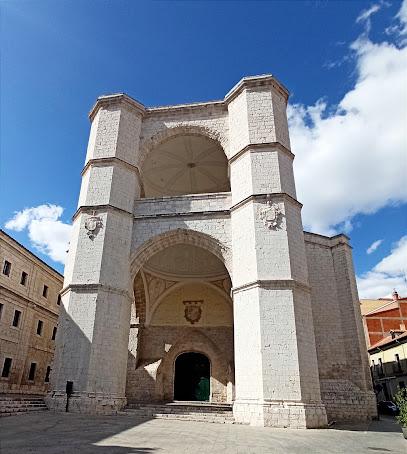
Casa de Cervantes
Explore the Casa de Cervantes, a must-visit museum in Valladolid dedicated to the life and works of the legendary author Miguel de Cervantes.

Parroquia Santa María de la Antigua
Explore the enchanting Parroquia Santa María de la Antigua, a Gothic and Renaissance masterpiece in Valladolid, reflecting the city's rich cultural heritage.

Casa Museo José Zorrilla
Discover the life and works of José Zorrilla at Casa Museo, a cultural gem in Valladolid showcasing 19th-century Spanish literary heritage.

Sala Municipal de Exposiciones (SME) de la Iglesia de Las Francesas
Explore the vibrant art scene at Sala Municipal de Exposiciones in Valladolid, where history meets contemporary creativity in a stunning setting.

Casa Museo Colón
Discover the legacy of Christopher Columbus at Casa Museo Colón, a captivating museum in Valladolid that brings history to life through fascinating exhibits.
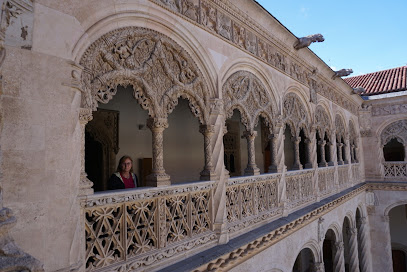
Royal Palace
Explore the Royal Palace of Valladolid, a historic landmark showcasing stunning architecture and rich royal heritage in the heart of Spain.

Essential places to dine
Los Zagales
Experience authentic Spanish cuisine at Los Zagales in Valladolid – where tradition meets innovation in every delicious bite.
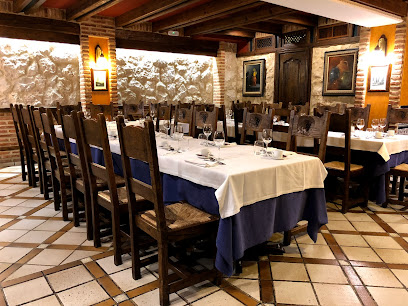
Restaurante Jero
Experience traditional Spanish cuisine at Restaurante Jero in Valladolid - where every dish tells a story of flavor and culture.
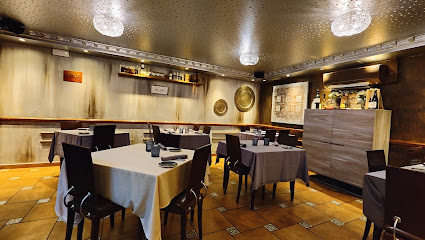
La Parrilla De San Lorenzo
Discover the flavors of Spain at La Parrilla De San Lorenzo - where grilled meats meet tradition in a charming setting.
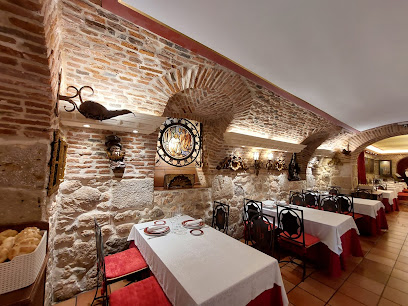
La Tasquita
Savor authentic Spanish tapas at La Tasquita, a vibrant bar in Valladolid offering delicious dishes and a warm atmosphere.
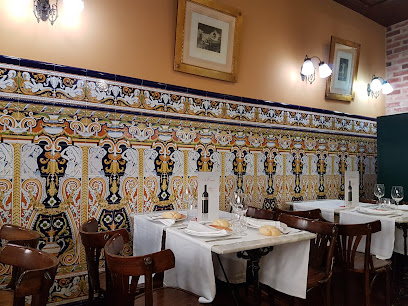
El Corcho
Experience authentic Spanish tapas at El Corcho in Valladolid - a culinary gem offering delightful flavors and warm hospitality.
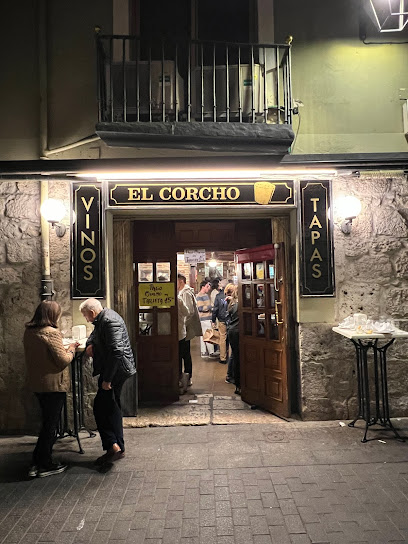
Eh Voilà! Crêpstaurante Casual
Discover the best crêpes in Valladolid at Eh Voilà! Crêpstaurante Casual - where French flair meets Italian charm in every bite.
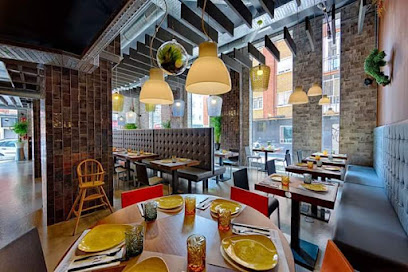
Restaurante Niza
Experience authentic Italian and Mediterranean cuisine at Restaurante Niza in Valladolid – a culinary delight for every palate.
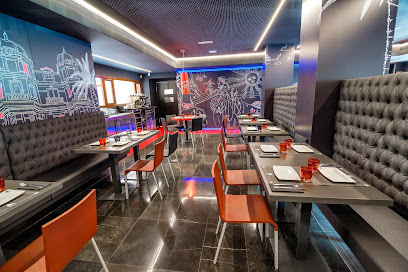
La Mafia se sienta a la mesa
Experience authentic Italian cuisine at La Mafia se sienta a la mesa in Valladolid - where traditional flavors meet modern dining.
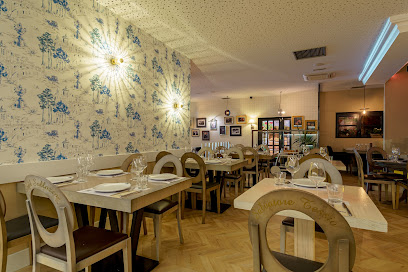
La Raíz
Experience authentic Mediterranean flavors at La Raíz, Valladolid's charming eatery specializing in rice dishes and grilled delights.
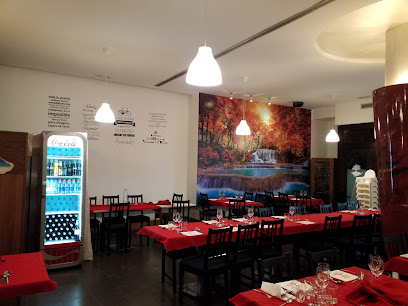
Villa Paramesa
Savor authentic Spanish flavors at Villa Paramesa in Valladolid – where every dish tells a story.
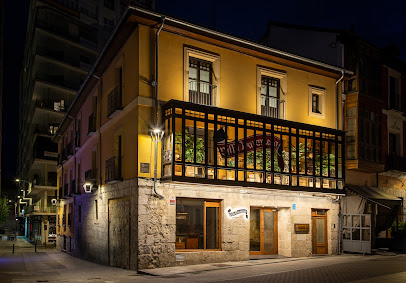
Le Bistró
Experience authentic French cuisine at Le Bistró in Valladolid, where every dish tells a story of flavor and tradition.
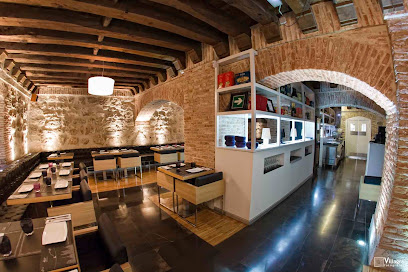
Vinotinto
Experience authentic Spanish flavors at Vinotinto in Valladolid—your go-to spot for exquisite tapas and fine wines.
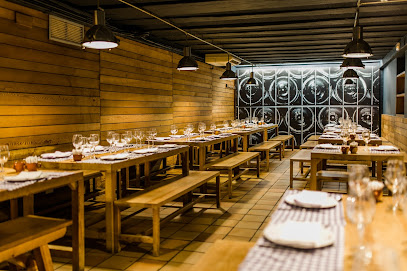
La Pícara
Experience authentic Spanish cuisine at La Pícara in Valladolid—where every bite tells a story of tradition and flavor.
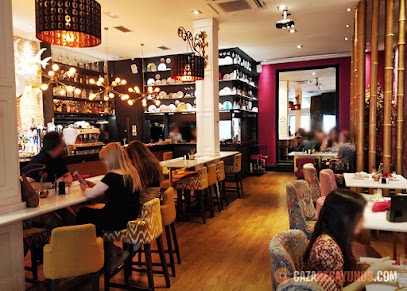
Restaurante asador El Figón de Recoletos
Discover authentic Castilian cuisine at Restaurante asador El Figón de Recoletos in Valladolid – a culinary treasure showcasing traditional flavors.
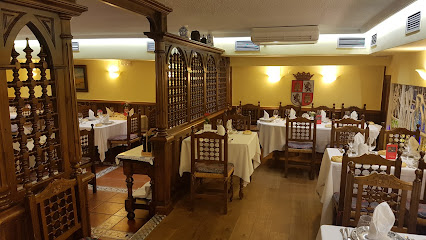
Gastrobar Sabores
Experience authentic Spanish flavors at Gastrobar Sabores in Valladolid - where every dish tells a story of tradition and passion.
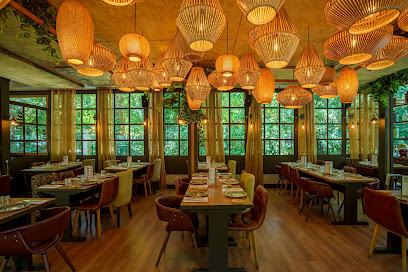
Markets, malls and hidden boutiques
RÍO Shopping
Discover RÍO Shopping in Valladolid: a vibrant shopping mall with diverse stores, delicious dining, and exciting entertainment for the whole family.
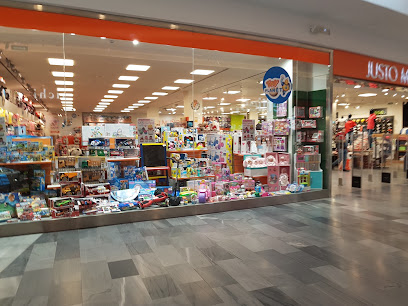
Pasaje Gutiérrez
Discover Pasaje Gutiérrez, a vibrant shopping mall in Valladolid blending local culture with modern retail experiences.

Centro Comercial Las Francesas
Explore the vibrant Centro Comercial Las Francesas, Valladolid's premier shopping destination, offering diverse shops, dining, and entertainment options for all.
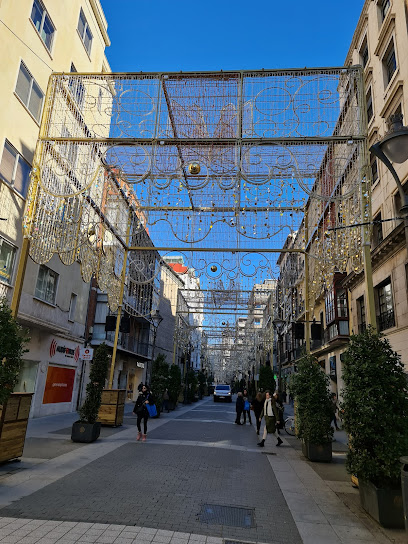
Bershka
Discover contemporary fashion at Bershka in Valladolid, where style meets affordability for all your wardrobe needs.
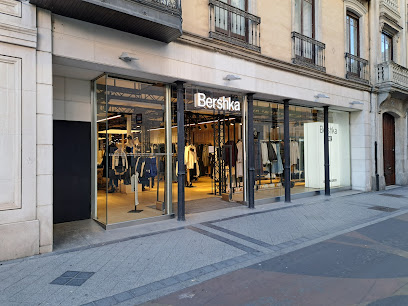
Cascanueces
Explore Cascanueces in Valladolid for unique gifts, stylish men’s clothing, and stunning costume jewelry that capture the essence of Spain.
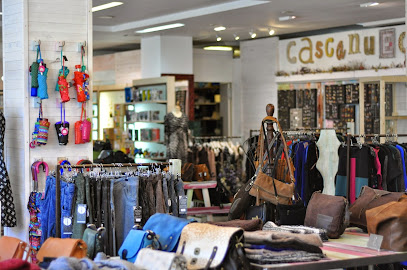
Tienda de té Valladolid, La Tetera
Experience the authentic flavors of Valladolid at La Tetera, your go-to tea and gourmet store in the heart of the city.
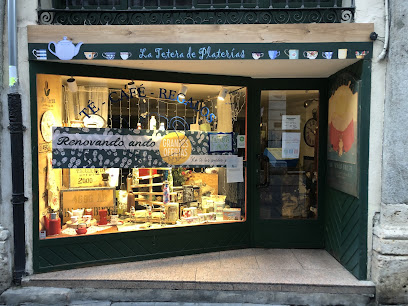
Natura
Explore Natura in Valladolid for unique gifts and clothing that capture the spirit of the region, perfect for tourists seeking authentic souvenirs.
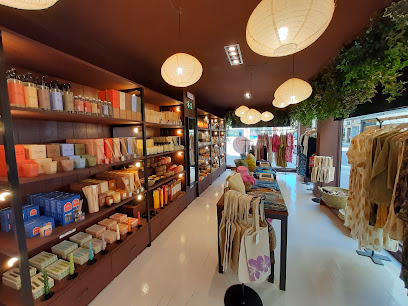
Raccoon Planet
Raccoon Planet: Your destination for unique collectibles, custom t-shirts, and gaming treasures in Valladolid, Spain.
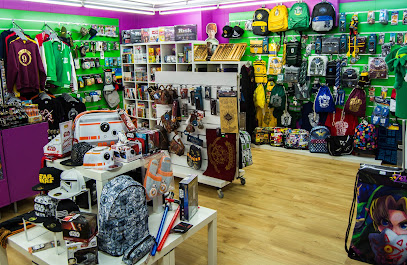
Tijeras Shop
Explore Tijeras Shop: A vibrant body piercing and gift shop in Valladolid, where creativity meets unique souvenirs.
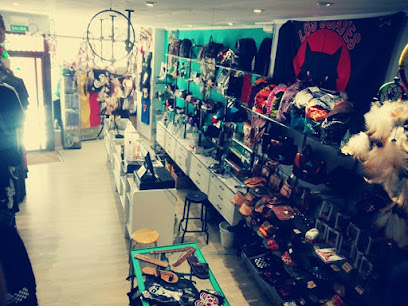
No Drama Ropa Mujer
Discover the latest women's fashion at No Drama Ropa Mujer in Valladolid, where style meets quality in a chic shopping environment.

PINGÜ
Discover unique gifts and local treasures at PINGÜ in Valladolid, where fashion accessories, home goods, and fragrances come together in a delightful shopping experience.
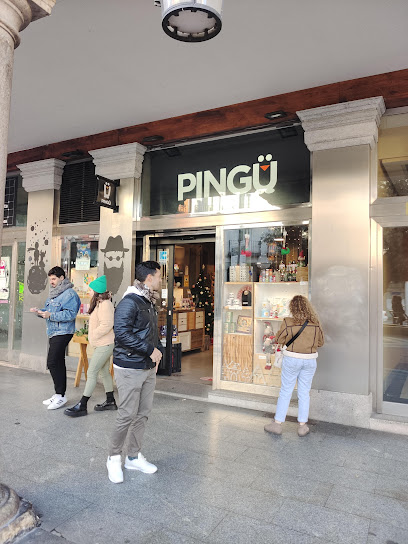
El Escudo de Valladolid (Regalos, Souvenirs)
Discover unique gifts and authentic souvenirs at El Escudo de Valladolid, a charming shop that embodies the spirit of Valladolid's rich culture.
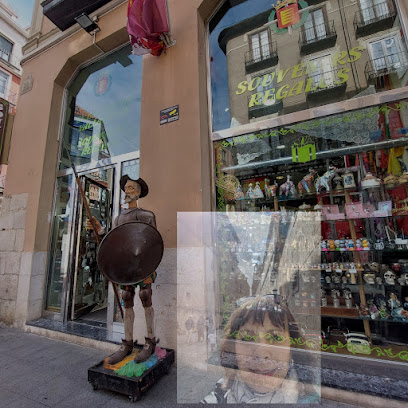
MARPORMEDIO LIFEWEAR
Explore MARPORMEDIO LIFEWEAR in Valladolid for an exceptional selection of clothing, beachwear, and accessories that redefine your style.
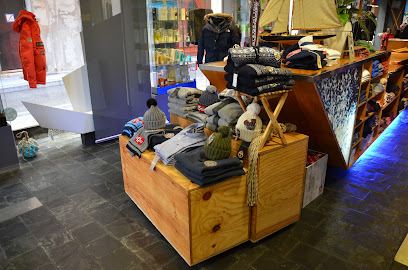
Planeta Urbano & Estación Futura
Discover the vibrant fashion scene at Planeta Urbano & Estación Futura, Valladolid's go-to destination for trendy clothing and stylish accessories.

L'OCCITANE EN PROVENCE
Explore the essence of Provence at L'OCCITANE EN PROVENCE, a delightful gift shop in Valladolid offering natural beauty products that inspire.
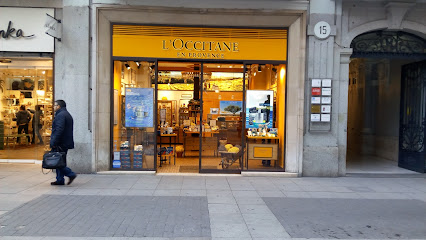
Essential bars & hidden hideouts
Kafka
Discover the magic of Kafka, a premier piano bar in Valladolid, where enchanting music and delightful cocktails create unforgettable nights.
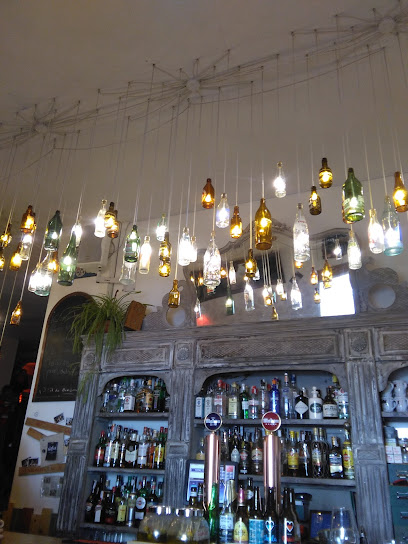
The Lost Child Cocktail's Bar
Discover the vibrant atmosphere and expertly crafted cocktails at The Lost Child Cocktail's Bar in Valladolid, where every sip is an experience.
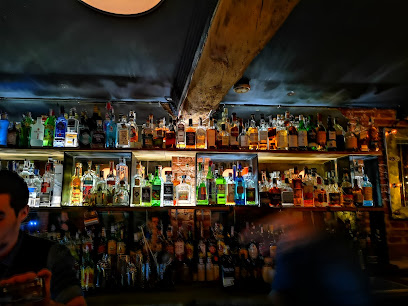
THE VILLA GIN BAR
Experience the vibrant atmosphere and exceptional gin selection at The Villa Gin Bar in Valladolid's lively nightlife scene.
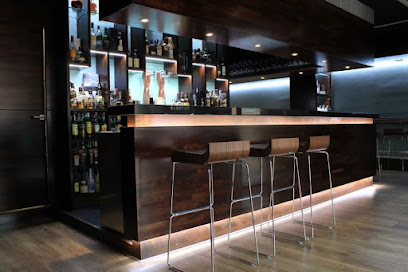
La Sastrería - Valladolid
Discover La Sastrería in Valladolid, a charming bar offering a vibrant atmosphere, exceptional drinks, and a taste of local culture.

Lord. Brit's beer & Gin Est.
Experience the vibrant nightlife of Valladolid at Lord. Brit's Beer & Gin Est., your go-to bar for craft beer and exquisite gin selections.
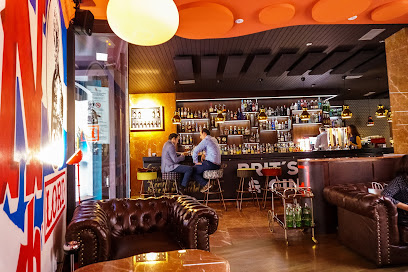
RUGBY BAR THE CENTRAL
Experience the lively spirit of Valladolid at Rugby Bar The Central, a vibrant pub and café perfect for sports lovers and social gatherings.
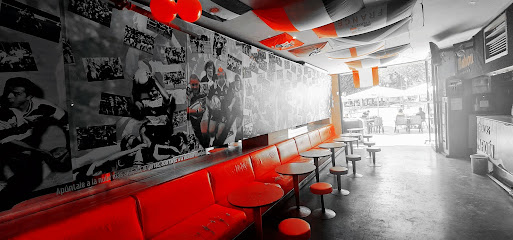
LaLupe Café Bar - Valladolid
Discover the lively LaLupe Café Bar in Valladolid, where delicious drinks and a vibrant atmosphere make for an unforgettable experience.
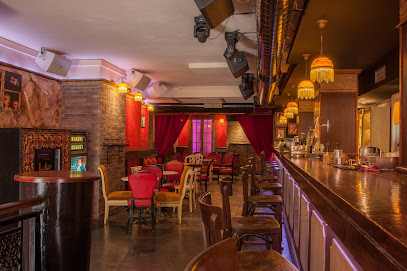
The Bowie
Discover the vibrant nightlife of Valladolid at The Bowie, where great drinks and a lively atmosphere await every visitor.
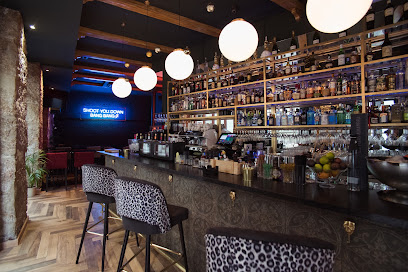
Ronerìa Tiki Domingo
Discover a tropical escape at Ronerìa Tiki Domingo, Valladolid's vibrant cocktail bar with exotic drinks and a lively atmosphere.
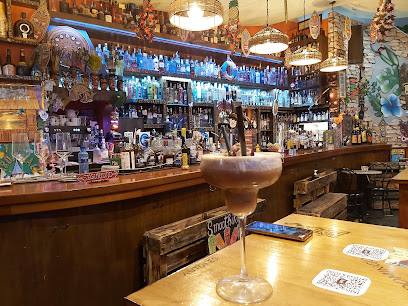
Candilejas café, copas y más - Valladolid
Discover the vibrant nightlife of Valladolid at Candilejas Café, a popular pub offering an array of drinks and a lively atmosphere.
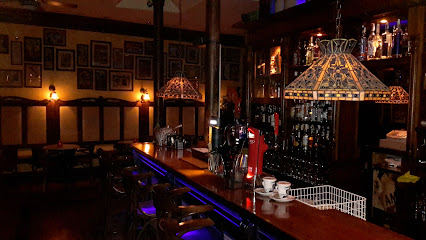
Les Paul
Les Paul Pub in Valladolid: A lively destination for music lovers, offering vibrant live performances, a diverse drink menu, and a cozy atmosphere.
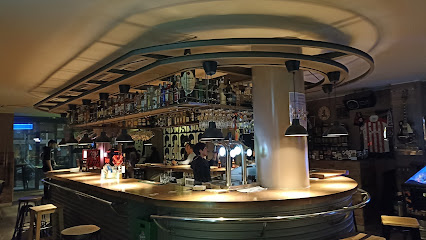
Bar Deltoya - Valladolid
Experience the vibrant nightlife of Valladolid at Bar Deltoya, where delicious drinks and a lively atmosphere await you.
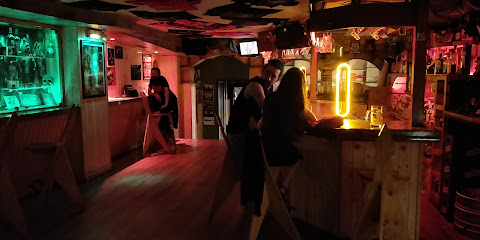
Mordor Rock Bar
Experience the vibrant nightlife of Valladolid at Mordor Rock Bar, where great beer, music, and atmosphere come together for an unforgettable night out.
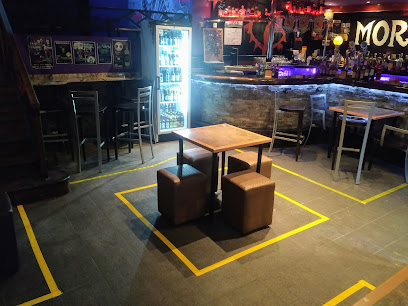
Vándalo bar - Valladolid
Experience the lively atmosphere and delicious cocktails at Vándalo Bar, a must-visit nightlife destination in Valladolid.
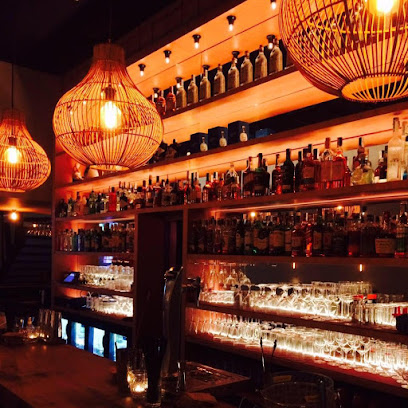
Cul de Sac Valladolid
Discover the vibrant atmosphere of Cul de Sac Valladolid, where locals and tourists unite for unforgettable drinks and live music in the heart of the city.
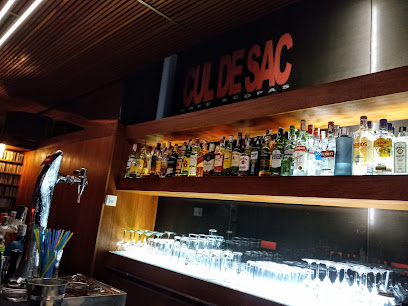
Local Phrases
-
- HelloHola
[O-la] - GoodbyeAdiós
[A-di-ós] - YesSí
[Sí] - NoNo
[No] - Please/You're welcomePor favor/De nada
[Por fa-vor/De na-da] - Thank youGracias
[Gra-cias] - Excuse me/SorryPerdón/Lo siento
[Per-dón/Lo sien-to] - How are you?¿Cómo estás?
[¿Có-mo es-tás?] - Fine. And you?Bien. ¿Y tú?
[Bien. ¿Y tú?] - Do you speak English?¿Hablas inglés?
[¿Ha-blas in-glés?] - I don't understandNo entiendo
[No en-tien-do]
- HelloHola
-
- I'd like to see the menu, pleaseQuisiera ver la carta, por favor
[Ki-sie-ra ver la car-ta, por fa-vor] - I don't eat meatNo como carne
[No co-mo car-ne] - Cheers!¡Salud!
[¡Sa-lud!] - I would like to pay, pleaseQuisiera pagar, por favor
[Ki-sie-ra pa-gar, por fa-vor]
- I'd like to see the menu, pleaseQuisiera ver la carta, por favor
-
- Help!¡Ayuda!
[¡A-yu-da!] - Go away!¡Vete!
[¡Ve-te!] - Call the Police!¡Llama a la policía!
[¡Ya-ma a la po-li-cía!] - Call a doctor!¡Llama a un médico!
[¡Ya-ma a un mé-di-co!] - I'm lostEstoy perdido
[Es-toy per-di-do] - I'm illEstoy enfermo
[Es-toy en-fer-mo]
- Help!¡Ayuda!
-
- I'd like to buy...Me gustaría comprar...
[Me gus-ta-ría com-prar...] - I'm just lookingSolo estoy mirando
[So-lo es-toy mi-ran-do] - How much is it?¿Cuánto cuesta?
[¿Cuan-to cues-ta?] - That's too expensiveEsto es demasiado caro
[Es-to es de-ma-sia-do ca-ro] - Can you lower the price?¿Puede bajar el precio?
[¿Pue-de ba-jar el pre-cio?]
- I'd like to buy...Me gustaría comprar...
-
- What time is it?¿Qué hora es?
[¿Qué ho-ra es?] - It's one o'clockEs la una
[Es la u-na] - Half past (10)Media (10)
[Me-dia (10)] - MorningMañana
[Ma-ña-na] - AfternoonTarde
[Tar-de] - EveningNoche
[No-che] - YesterdayAyer
[A-yer] - TodayHoy
[Hoy] - TomorrowMañana
[Ma-ña-na] - 1Uno
[U-no] - 2Dos
[Dos] - 3Tres
[Tres] - 4Cuatro
[Cua-tro] - 5Cinco
[Cin-co] - 6Seis
[Seis] - 7Siete
[Siete] - 8Ocho
[O-cho] - 9Nueve
[Nue-ve] - 10Diez
[Diez]
- What time is it?¿Qué hora es?
-
- Where's a/the...?¿Dónde está el/la...?
[¿Dón-de es-tá el/la...?] - What's the address?¿Cuál es la dirección?
[¿Cual es la di-rec-ción?] - Can you show me (on the map)?¿Puedes mostrarme (en el mapa)?
[¿Pue-des mos-trar-me (en el ma-pa)?] - When's the next (bus)?¿Cuándo es el próximo (autobús)?
[¿Cuan-do es el pró-xi-mo (au-to-bús)?] - A ticket (to ....)Un billete (a ...)
[Un bi-lle-te (a ...)]
- Where's a/the...?¿Dónde está el/la...?
History of Valladolid
-
Valladolid's origins can be traced back to the Roman era, but it was officially founded in the 11th century by Count Pedro Ansúrez. Under his leadership, the city began to flourish, thanks to its strategic location along the Pisuerga River, which facilitated trade and transport.
-
During the Middle Ages, Valladolid became a significant political and economic center in the Kingdom of Castile. The city hosted numerous royal courts and was the site of important meetings, such as the convening of the Cortes in 1295. The construction of notable Gothic and Romanesque buildings, including the Church of Santa María la Antigua, also marked this period.
-
The 15th and 16th centuries were a golden era for Valladolid. In 1469, it witnessed the marriage of Ferdinand II of Aragon and Isabella I of Castile, which eventually led to the unification of Spain. The city was also the birthplace of future Emperor Charles V in 1500. Valladolid briefly served as the de facto capital of Spain from 1601 to 1606 under Philip III.
-
Valladolid holds a special place in Spanish literary history. It was in this city that Miguel de Cervantes published the first part of 'Don Quixote' in 1605. The city is also home to the Casa de Cervantes, where the author lived for a time. The literary heritage of Valladolid is further enriched by the presence of the National Sculpture Museum, which houses works from the Renaissance and Baroque periods.
-
Valladolid boasts an array of architectural wonders, from its medieval churches to Renaissance palaces. The Cathedral of Valladolid, designed by Juan de Herrera, is a prime example of Spanish Renaissance architecture. The city's Plaza Mayor, one of the first of its kind in Spain, served as a model for many other plazas across the country and Latin America.
-
In the 19th and 20th centuries, Valladolid underwent significant industrial and infrastructural development. The arrival of the railway in the mid-19th century spurred economic growth. Today, Valladolid is a vibrant city that balances its rich historical heritage with modern amenities, making it a fascinating destination for visitors.
-
Valladolid is known for its vibrant cultural scene, particularly its Semana Santa (Holy Week) processions, which are among the most famous in Spain. The city also hosts the Valladolid International Film Festival (Seminci), one of the oldest and most prestigious film festivals in the country. These events reflect the city's dynamic cultural life and its commitment to preserving traditions while embracing contemporary trends.
Valladolid Essentials
-
Valladolid is well-connected and can be reached by various modes of transportation. The nearest major airport is Madrid-Barajas Adolfo Suárez Airport (MAD), located about 200 kilometers away. From Madrid, you can take a high-speed train (AVE) to Valladolid-Campo Grande Station, which takes approximately one hour. Alternatively, you can drive or take a bus from Madrid, which typically takes around 2 to 3 hours depending on traffic. Valladolid also has its own small airport, Valladolid Airport (VLL), which offers limited domestic and international flights.
-
Once in Valladolid, you can use public buses, taxis, or rent a car to get around. The city has an efficient public bus system operated by AUVASA, with routes covering all major areas. Taxis are readily available and can be hailed on the street or booked via phone. For those who prefer to drive, car rental services are available at the airport and in the city. Biking is also a popular option, with several bike rental stations and dedicated cycling paths.
-
The official currency in Spain is the Euro (€). Credit and debit cards are widely accepted in Valladolid, including in hotels, restaurants, and shops. However, it's advisable to carry some cash for smaller establishments and markets. ATMs are plentiful and can be found throughout the city, including at the airport, train station, and major shopping areas.
-
Valladolid is generally a safe city for tourists. However, like any urban area, it's important to stay vigilant and take standard precautions. Avoid walking alone at night in poorly lit areas and keep an eye on your belongings in crowded places such as markets and public transport. While Valladolid doesn't have specific high-crime areas targeting tourists, it's always best to stay aware of your surroundings.
-
In case of an emergency, dial 112 for immediate assistance. This number covers police, medical, and fire emergencies. Valladolid has several hospitals and medical facilities, including Hospital Clínico Universitario and Hospital Río Hortega. Pharmacies are widespread and can provide over-the-counter medications. It's advisable to have travel insurance that covers medical emergencies.
-
Fashion: Do dress smartly; Spaniards generally dress well and appreciate neat attire. Avoid overly casual or revealing clothing, especially in churches. Religion: Do respect religious customs. When visiting churches, dress modestly and avoid loud behavior. Public Transport: Do be courteous and give up your seat for elderly passengers. Don't eat or drink on public buses. Greetings: Do greet people with a handshake; a kiss on both cheeks is common among friends. Eating & Drinking: Do try local dishes and wines. Don't rush meals; dining is a social experience in Spain.
-
To experience Valladolid like a local, visit the Campo Grande park for a leisurely stroll or paddleboat ride. Explore the Mercado del Val, an indoor market offering fresh produce and local delicacies. Enjoy a traditional tapas crawl in the city center, particularly around Plaza Mayor and the adjoining streets. Don’t miss the annual Semana Santa (Holy Week) processions, which are a significant cultural event. Engage with locals; they are generally friendly and proud of their city's history and heritage.
Trending Landmark in Valladolid
-
Parque Campo Grande
-
Plaza Mayor de Valladolid
-
Plaza de Zorrilla
-
Cathedral of Valladolid
-
Museo Nacional de Escultura
-
Pasaje Gutiérrez
-
Casa de Cervantes
-
Casa Museo Colón
-
Royal Palace
-
Museo Oriental
-
Palacio de Fabio Nelli
-
Valladolid Campo Grande
-
Church of San Miguel and San Julián, Valladolid
-
Arroyo de la Encomienda Botanical Garden
-
Casa Consistorial de Valladolid
Nearby Cities to Valladolid
-
Things To Do in Segovia
-
Things To Do in Salamanca
-
Things To Do in Avila
-
Things To Do in Burgos
-
Things To Do in Madrid
-
Things To Do in Bragança
-
Things To Do in Toledo
-
Things To Do in Oviedo
-
Things To Do in Santander
-
Things To Do in Chaves
-
Things To Do in Bilbao
-
Things To Do in Vila Real
-
Things To Do in Lamego
-
Things To Do in Pamplona
-
Things To Do in San Sebastián







